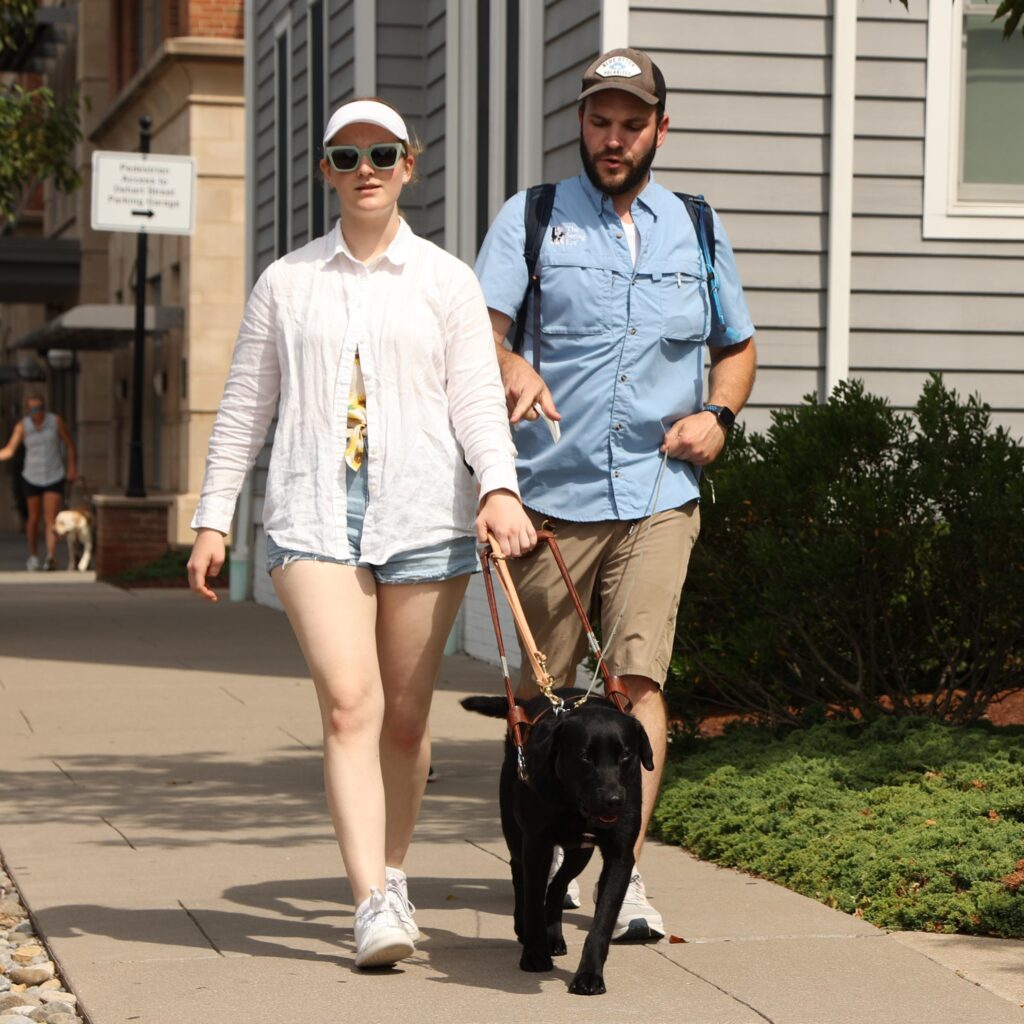Resources
About Vision Loss
Learn about Vision Loss
Many people imagine being blind is like having your eyes closed, or being in a dark room. But vision loss can take many forms, and not all people who are blind would be eligible for, or benefit from, a Seeing Eye® dog. We consider each applicant on a case-by-case basis.

It's possible to be legally blind and require the assistance of a guide dog, but still be able to read, see colors, perceive light, recognize faces or make eye contact.
The definition of legal blindness is sight of 20/200, or worse, in the better eye with the best possible correction; or a visual field (peripheral vision) of 20 degrees or less. (A normal field of vision is 180 degrees.)
It’s possible to be legally blind and require the assistance of a guide dog, but still be able to read, see colors, perceive light, recognize faces or make eye contact.
The most common causes of blindness that affect Seeing Eye graduates are Retinopathy of Prematurity, Retinitis Pigmentosa, Glaucoma, Retinal Detachment, and Diabetes.
- Retinopathy of Prematurity is usually caused by over-oxygenation of pre-mature babies during intensive neonatal care. This can result in a partial or total loss of vision.
- Retinitis Pigmentosa is a genetic condition that causes tunnel vision or a slow loss of visual field (peripheral vision) over a number of years, until total blindness occurs.
- Glaucoma is similar to Retinitis Pigmentosa because it affects peripheral vision, but glaucoma is caused by an increased in pressure in the eye. In most cases it is genetic, but can be caused by infection or an injury to the eye.
- Retinal Detachment is caused by a genetic deterioration of the retina, or it can be caused by a severe hit to the head or eye. Sight can become blurred or total blindness may result.
- Diabetic Retinopathy is the most common diabetic eye disease and a leading cause of blindness in American adults. It is caused by changes in the blood vessels of the retina. This causes scattered areas of vision loss or total blindness.
- Others lose their sight through accidents or war injuries.











